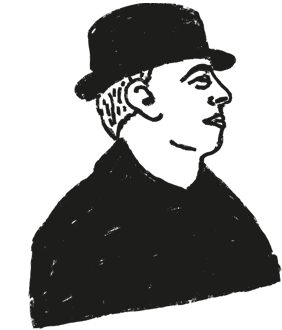Gombrowicz en la Universidad, parte 3
Seguimos con la oferta académica sobre Witoldo. Otra vez la U. Jaguelónica, pero esta vez un curso a cargo de nuestro amigo Łukasz Tischner, que estuvo en el Congreso Gombrowicz el año pasado y nos cayó súper bien.
Miłosz and Gombrowicz. The Dialectic of Belief and Unbelief
Course tutor: Łukasz Tischner, PhD
Associate professor in the Faculty of Polish Studies at the Jagiellonian University.
Time and venue: TBD
Office hours: TBD
Description
Miłosz and Gombrowicz are the key Polish writers who – more or less openly – debated the
problem of religion. One of the biggest issues for Miłosz was so called ”the erosion of the
religious imagination” related to the sense of loss of “the second space”, e.g. beliefs of
Christian eschatology. Gombrowicz was obsessed with the fact of human and animal pain
which contrasted with Christian image of the benevolent God. At a glance they just seem to stand on the opposite sides; Miłosz claimed to be Catholic, while Gombrowicz defined
himself as an atheist. After consideration, however, it occurs more complex – Miłosz’s
religious assent is very fragile („I was judged for my despair because I was unable to
understand this [Christian eschatological vision]” – From the Rising of the Sun),
Gombrowicz’s atheism, on the other hand, is accompanied by a sense of mystery of life and his criticism against “shallow laicism”, e.g. militant and vulgar versions of atheism. The elusive nature of Miłosz’s and Gombrowicz’s positions towards religion is summed up in the phrase “the dialectic of belief and unbelief”. The essential aim of the course is to reconstruct dynamics of religious/agnostic/atheistic insights shared by the two great personalities.
The starting point will be comparative reading of The World: Naive Poems (1943) and The
Marriage (1947), both written in a particular context of the implosion of traditional
metaphysical frame. Further reading of the two writers include several chapters from Diary of Gombrowicz, some essays (e.g excerpts from Ulro Land) and poems by Miłosz.
The course will also introduce some basic ideas referring to an unprecedented condition of
religious belief in 20th century. The main guide through the ideas that mark out the horizon of contemporary religious and secular beliefs is Charles Taylor, the author of fundamental A
Secular Age.
Plan of the course:
1. Introducing main concepts of secularization, disenchantment, sources of an argument
between belief and unbelief (Weber, Casanova, Taylor),
2. Debating some seminal texts by the “masters of suspicion” (Marx, Freud, Nietzsche),
3. Reading If Only This Could Be Said by Miłosz, the text which openly explains
ambivalence of Miłosz’s view on religion,
4. Close reading of “The World” by Miłosz,
5. Close reading of “The Marriage” by Gombrowicz,
6. Reading excerpts from Diary, vol. I and II by Gombrowicz referring to Catholicism,
the meaning of human and animal pain and his vision of the universe,
7. Reading excerpts from “The Land of Ulro” and some poems by Milosz.
Bibliography:
1. Witold Gombrowicz, The Marriage
2. Witold Gombrowicz, Diary, vol. I and II (excerpts)
3. Czesław Miłosz, The World
4. Czesław Miłosz, Ulro Land (excerpts)
5. Czesław Miłosz, If Only This Could Be Said, in: To Begin Where I Am: Selected
Essays by Czesław Milosz, edited and with an introduction by Bogdana Carpenter and
Madeline G. Levine, New York 2001
6. Alister McGrath, The Twilight of Atheism: The Rise and Fall of Disbelief in the
Modern World, London 2004 (excerpts)
7. Charles Taylor, The Twice Born, in: Varieties of Religion Today, New Haven 2002
The course requirements and percentage of the final grade:
– attendance; you may have up to one unexcused absence. Further unexcused absences will result
in an appropriate reduction in your final grade,
– active participation in class discussions (30%); this is a discussion class in which your
active participation is an essential part of your grade,
– oral final exam (70%).
